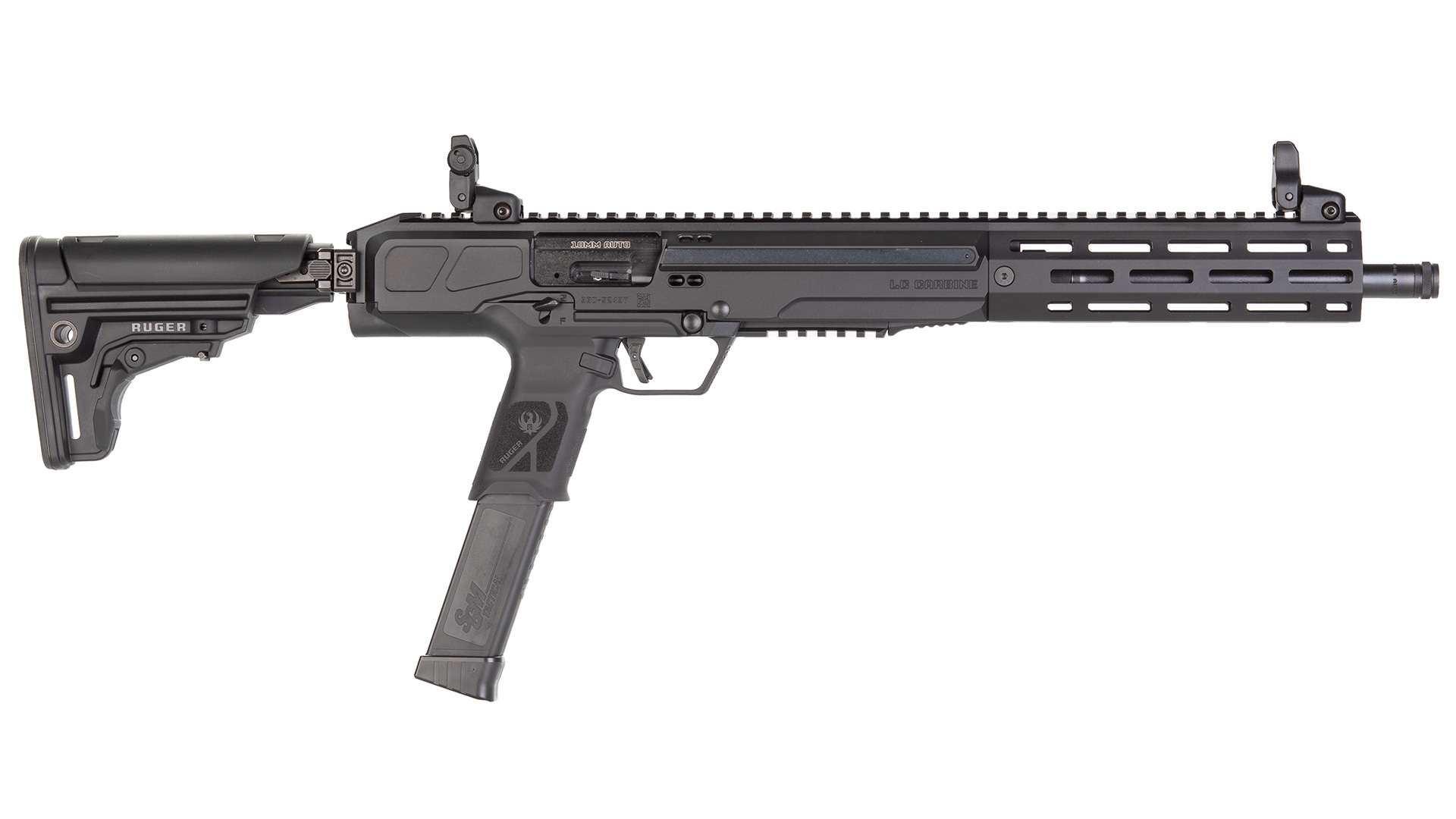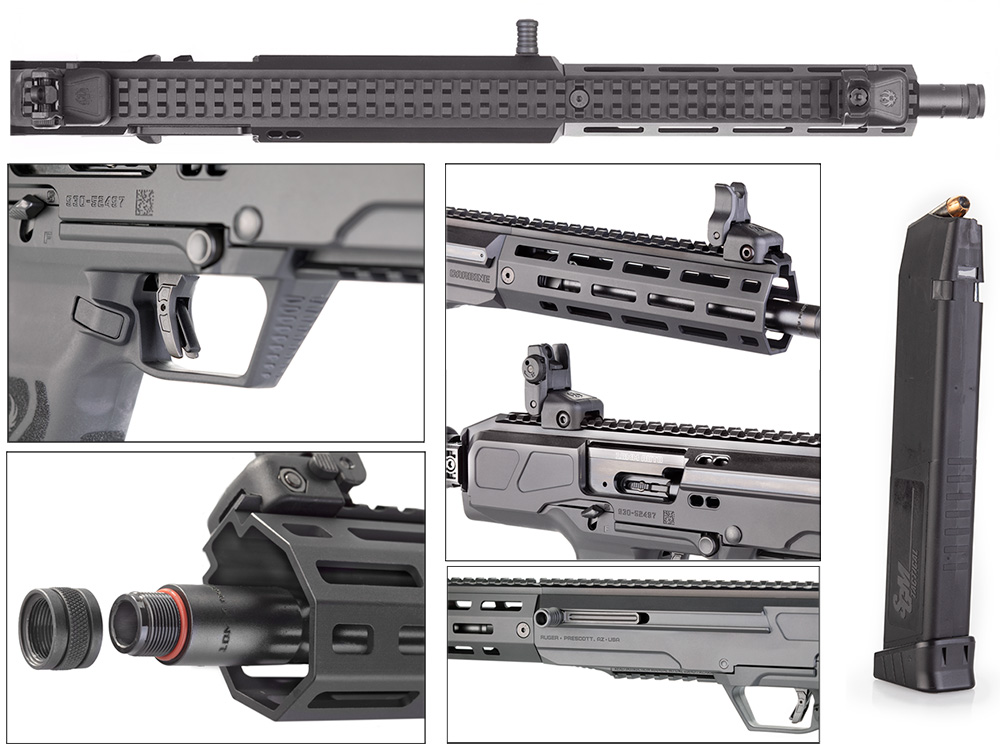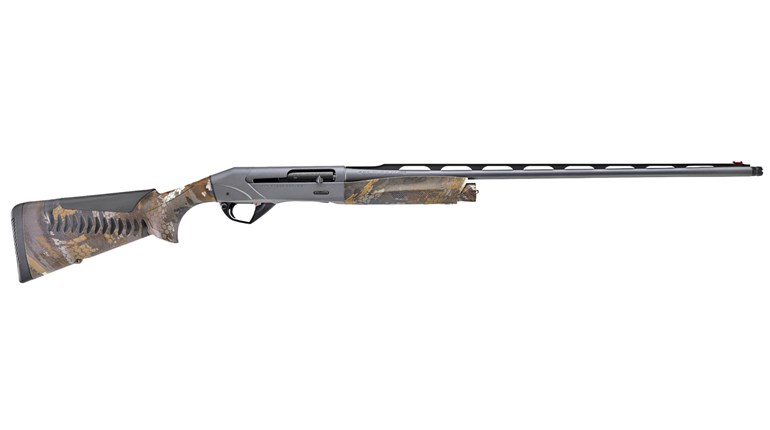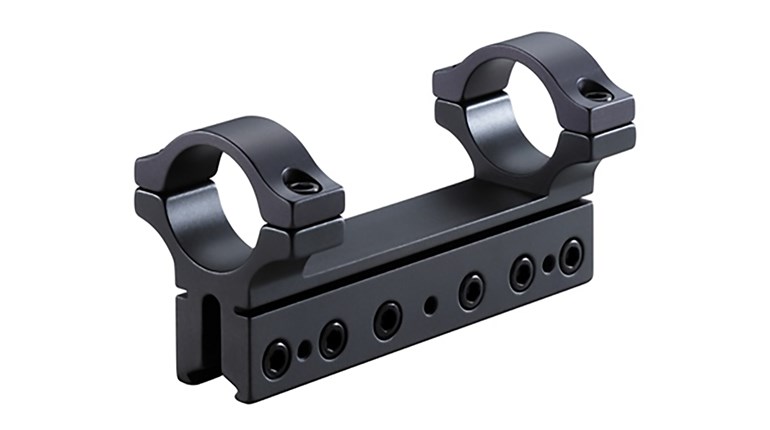
Ruger debuted its first LC Carbine in 2022, building it in the somewhat surprising chambering choice of 5.7x28 mm and followed up this launch with an LC Carbine in .45 ACP early in 2024. Now, the gunmaker offers a 10 mm-chambered version of the popular LC line. This newest LC Carbine represents a solid choice for home- and self-defense applications and will be a lot of fun at the range and for general recreational shooting.
Blowback-operated and featuring a 16.25-inch, threaded barrel, this LC Carbine measures out at just 28.6 inches. At 7 pounds, 4 ounces, the 10 mm model isn’t as nifty as the 5.9 pound 5.7x28 version, and it is somewhat front heavy, though it actually balances nicely on the shoulder. Right- and left-hand bolt releases, an octagonal handguard and a reversible magazine release are standard.
The LC Carbine 10 mm is compatible with most Glock-pattern, 10 mm magazines and is sold with one 30-round magazine. The large magazine loaded easily enough—with a mag loader—and fed rounds fine even during rapid fire. But, it was too cumbersome for my accuracy testing when shooting from a bench. For that, I used 15- and 20-round magazines made by ETS.

The LC Carbine also sports an aluminum freefloat handguard with M-Lok attachment slots, QD attachment points for slings and a full-length Picatinny rail for AR-height optics. Ruger’s Rapid Deploy open sights, front and rear, are standard. They were certainly functional and folded down easily, popping back into place with a push of the release. But, I really prefer a red-dot sight, and so mounted a Meprolight Tru-Vision reflex onto the carbine. Plus, I needed to accuracy test the carbine out to 50 yards, so I added a 3X magnifier behind the reflex sight. Ample rail space made the mountings quite easy.
When folded, the carbine’s stock made for a supremely compact firearm that stowed easily in the trunk of my vehicle. The stock is reversible and adjustable for length-of-pull, and is easily switched out with aftermarket AR-pattern stocks.
At my outdoor range, I tested the LC Carbine using three brands of 10 mm ammunition: Federal’s American Eagle 180-grain FMJ load, Hornady Critical Duty 175-grain FlexLock and Winchester White Box (target) 180-grain FMJs. Group sizes at 50 yards were quite good, averaging 1.5 inches for five shots.
The carbine’s 16.25-inch barrel provided longer powder-burn time compared with a pistol, to the tune of 123 to 146 additional fps. For comparison, Hornady rates the Critical Duty I used as leaving the muzzle of a 5-inch pistol barrel at 1,160 fps and delivering 523 ft.-lbs. of energy. I chronographed that same FlexLock bullet leaving my test Carbine at 1,306 fps; that velocity generated 663 ft.-lbs. of thumping power. Same ammo, different platform and a 26.8-percent increase in energy. 
In 150 rounds, the LC Carbine experienced zero failures to feed or eject. The magazines popped out positively with a push of the release button. The slide release also worked fine with minimal pressure required from my shooting-hand thumb. Its charging handle, located on the left side of the handguard and barrel, racked back easily but not too easily.
The one chink in the Carbine’s otherwise stellar armor? The stiff, imprecise trigger. It broke at 4 pounds, 4 ounces of pull, on average. I know the trigger pull widened at least some of my groups. While those groups were certainly effective enough for self-defense situations, I’m still hoping for an aftermarket option. For safety, the LC Carbine combines a protected internal hammer with a bladed-safety trigger, as well as 1911-style ambidextrous manual safeties.
Accurate, functional and compact, the LC Carbine 10 mm is a needed option for those who consider a 9 mm PCC a bit underpowered.





































